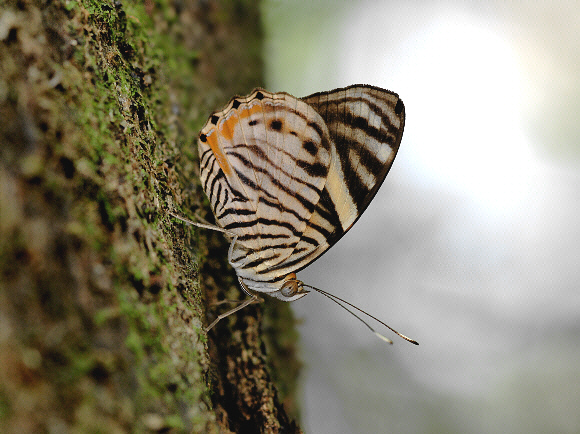
Introduction
Tigridia acesta is the only member of its genus, but is closely related to the Mosaic Colobura dirce. It is distributed throughout much of the neotropics from Costa Rica to Peru.
Habitats
This species is primarily associated with lowland virgin rainforest, but also occurs in lower numbers in secondary rainforest, humid deciduous forest and cloudforest habitats at altitudes up to 1500m.
Lifecycle
The eggs are white, and laid singly on leaves of the foodplants. The fully grown larva is long and thin, purplish-brown in colour, with an ochre head. It is adorned with multi-branched spines on the head and on all the body segments. It feeds solitarily on Cecropia and Paruma (Moraceae). When feeding the larva bites through the midrib to cut off the flow of defensive toxins to the leaf tissue. This causes the leaf to droop, and the larva stretches across to feed from the leaf tips. The pupa is dark reddish-brown, mottled with green, and resembles a piece of algae-covered wood.
Adult behaviour
The behaviour is similar to that of Colobura – the butterflies perch in a head-downwards position on shaded, algae-covered tree trunks, at a height of between about 1-4 metres. The wings are always held erect. It is common to find 2-3 Tigridia gathered on favoured trunks, imbibing moisture. Both sexes reportedly also feed at rotting fruit.
